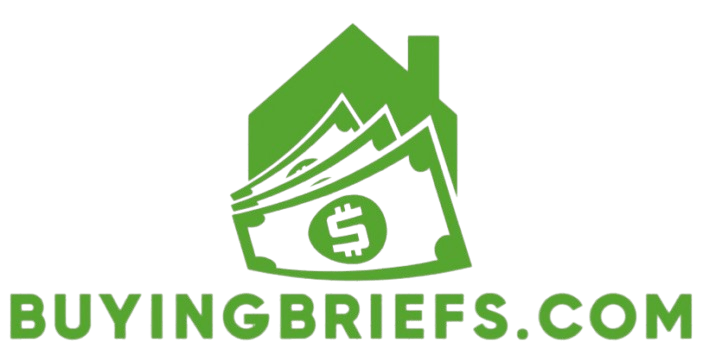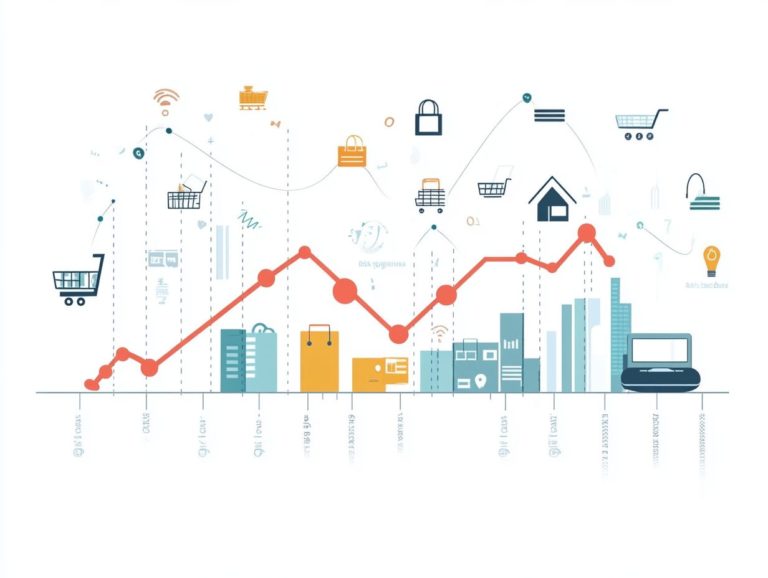The Effects of Seasonal Changes on Sales
Seasonality significantly influences sales across a variety of industries, affecting everything from consumer behavior to your strategic planning.
As the seasons shift, so do consumer buying patterns, creating both challenges and opportunities for your business. This article delves into the positive and negative impacts of seasonal changes, revealing how they shape consumer spending and offering you strategies to adapt and maximize sales during peak times.
Get ready to discover case studies of companies that have successfully managed these seasonal transitions, along with tools to help you predict and prepare for future changes. Immerse yourself in these insights to learn how to harness seasonality for your business success!
Contents
- Key Takeaways:
- The Impact of Seasonal Changes on Sales
- Understanding Consumer Behavior During Seasonal Changes
- Strategies for Managing Seasonal Changes in Sales
- Case Studies on Seasonal Changes in Sales
- Predicting and Preparing for Seasonal Changes
- Frequently Asked Questions
- What are the main effects of seasonal changes on sales?
- How does weather affect sales for businesses?
- What can businesses do to mitigate the effects of seasonal changes on sales?
- How can small businesses cope with the impact of seasonal changes on sales?
- What Industries Are Most Affected by Seasonal Changes in Sales?
- How Can Businesses Increase Sales with Seasonal Changes?
Key Takeaways:

- Seasonal changes can have both positive and negative effects on sales, making it crucial for businesses to understand and adapt to consumer behavior during these periods.
- Successful management of seasonal changes in sales requires adapting to trends and maximizing sales during peak seasons through strategic planning and forecasting.
- Tools and techniques for predicting and preparing for seasonal changes can help businesses stay ahead of the competition and capitalize on seasonal opportunities for increased sales and profitability.
Defining Seasonality in Sales
Seasonality in sales refers to the predictable fluctuations that occur at specific times of the year, influencing sectors like retail, agriculture, and e-commerce. Grasping these seasonal variations is essential for you to align your marketing strategies, manage inventory effectively, and optimize operational plans. This ensures that you meet consumer demands while maximizing revenue.
By recognizing seasonality, you can analyze consumer behavior and tailor your approach to foster greater business success. For example, retailers often see a spike in sales during the holiday season, capitalizing on increased consumer spending. This awareness of seasonal patterns is invaluable, not just for forecasting demand but also for allocating resources wisely.
If you ignore these cycles, you risk overstocking or understocking. This can have a direct negative impact on your sales performance. In various industries, from tourism to food production, adapting to these natural trends is crucial for maintaining profitability and sustainability in a competitive market.
The Impact of Seasonal Changes on Sales
Seasonal changes significantly influence your business sales, creating distinct fluctuations in demand that can either elevate or impede your sales performance during particular periods, like holiday seasons or vacation times.
By closely analyzing these sales trends, you can adjust your strategies and manage your inventory effectively to align with consumer preferences.
Positive and Negative Effects
The effects of seasonality on sales can play out in both delightful and challenging ways, affecting consumer demand and shaping the success of your marketing strategies. On the bright side, you might enjoy sales peaks during festive times. On the flip side, you may face dips in demand during quieter months, which calls for astute sales trends analysis and nimble marketing campaigns.
Take the winter holidays, for example. This time of year often brings a surge in consumer interest for gifts and decorations, resulting in soaring sales figures. However, once the festivities wrap up, you may notice demand fluctuating, leaving your business scrambling to maintain that momentum, potentially leading to inventory headaches.
To navigate these challenges, consider implementing operational strategies such as managing stock and planning promotions. This includes:
- Bulk purchasing during those bustling demand periods.
- Launching targeted promotions when things slow down.
This dual approach not only helps balance your stock levels but also keeps your consumers engaged throughout the year, effectively minimizing the impact of those seasonal lulls.
Understanding Consumer Behavior During Seasonal Changes
Understanding consumer behavior during seasonal changes is crucial for you as a business owner. It unveils how purchasing habits transform in response to variables like holiday shopping, seasonal demand, and economic cycles.
By analyzing these behaviors, you can refine your marketing messages and operational strategies to effectively meet the evolving needs of your consumers. Act now to refine your strategies!
How Seasonal Changes Affect Consumer Spending

Seasonal changes have a profound impact on consumer spending patterns, especially during peak times like the holiday season. Spending typically surges due to increased consumer engagement and targeted marketing efforts.
It s essential for you to grasp these dynamics to adjust your product offerings and pricing strategies accordingly.
Take, for example, the back-to-school shopping season. Retailers often boost their inventory and adopt aggressive sales tactics to maximize profits as families gear up for the academic year.
In financial services, expect more consumers looking for loans or credit to help with holiday spending. Similarly, during the summer months, the travel industry sees a significant uptick in sales, capitalizing on vacation vibes.
By aligning your strategies with these seasonal rhythms, you can enhance the customer experience and drive consistent revenue growth throughout the year.
Strategies for Managing Seasonal Changes in Sales
To effectively navigate seasonal shifts in sales, implement tailored strategies that cover inventory management, marketing campaigns, and changes in how you operate.
This preparation helps you meet changing consumer demand effectively. This proactive approach maximizes sales and keeps your brand visible during peak seasons.
Adapting to Seasonal Trends
Adapting to seasonal trends means staying in tune with changing consumer preferences. Leverage sales forecasts to shape your marketing strategies.
By aligning your product offerings and promotional efforts with these trends, you can significantly enhance customer engagement and drive sales performance.
Staying adaptable is key! It directly impacts how consumers behave.
By utilizing data analysis, you can dissect past sales cycles to uncover patterns that provide insights into future demands.
Market research will further enrich your understanding by revealing emerging trends and consumer sentiments.
By grasping these dynamics, you can optimize inventory management, create targeted marketing campaigns, and meet customer needs more effectively. This approach not only maximizes profits but also fosters stronger relationships with consumers, positioning your brand favorably in a competitive marketplace.
Maximizing Sales During Peak Seasons
Maximizing your sales during peak seasons requires crafting meticulously tailored marketing messages and establishing strategic partnerships that align with consumers’ holiday shopping needs and preferences.
By implementing effective promotional strategies, you can drive revenue generation and significantly enhance your overall sales performance.
In today s fiercely competitive marketplace, grasping sales trends is essential for any business aiming to thrive. Elevate your offerings by tuning into the pulse of consumer demand through thorough market research, enabling you to tailor promotions that truly capture attention.
Harness social media campaigns, create limited-time offers, and implement loyalty programs to instill urgency and excitement around your products. Collaborating with complementary brands opens unique promotional opportunities that can broaden your customer reach.
By leveraging these strategies, you not only boost your visibility but also cultivate lasting relationships with consumers throughout the holiday season. Start implementing these strategies today to see results!
Case Studies on Seasonal Changes in Sales
Case studies on seasonal changes in sales offer valuable insights into how successful companies adeptly navigate fluctuations in consumer behavior through innovative marketing strategies and operational adjustments.
By diving into these examples, you can glean important lessons to enhance your own sales performance during critical seasonal periods.
Successful Companies and Their Seasonal Strategies

Successful companies often implement strong seasonal strategies that adapt to the ever-shifting market dynamics. By utilizing targeted marketing campaigns and information gathered from analyzing data, you’ll see a boost in your business success!
By examining these strategies, you can glean valuable insights on how to optimize your sales trends and achieve sustainable growth.
Many firms closely analyze consumer needs during peak seasons. They craft promotional offers that resonate more deeply with their target audiences. This might mean launching holiday-themed products or offering tailored discounts that truly capture buyer interest.
During these critical periods, companies frequently adjust their operational strategies to effectively manage inventory and streamline distribution. By leveraging customer feedback and market trends, they not only boost sales but also foster brand loyalty.
This approach ensures that their business performance remains resilient amidst fluctuations in demand. Such adaptability is essential for creating a lasting impact in highly competitive industries.
Predicting and Preparing for Seasonal Changes
Predicting and preparing for seasonal changes is crucial if you want to stay ahead of demand fluctuations and tailor your product offerings to align with consumer behavior patterns.
By utilizing effective forecasting techniques, you can optimize your sales forecasts and ensure you are well-equipped for peak seasons. This proactive approach not only enhances your operational efficiency but also positions your business to meet customer expectations seamlessly.
Tools and Techniques for Forecasting Seasonal Sales
Understanding tools and techniques for forecasting seasonal sales is essential for your business. By leveraging data analysis and market research, you can refine your sales forecasts and elevate your overall operational strategies.
Analyzing past sales data shows patterns in buying behavior, allowing you to identify shifts in consumer behavior. Employing software tools dedicated to predictive analytics can offer insights derived from historical data, enabling you to anticipate demand and manage inventory more effectively.
Utilizing market research approaches such as surveys and focus groups can uncover valuable insights directly from consumers, shaping your future marketing strategies. This comprehensive approach ensures that your financial services and product offerings align closely with market needs, ultimately leading to enhanced profitability and customer satisfaction.
Frequently Asked Questions
What are the main effects of seasonal changes on sales?
- Seasonal changes can significantly impact sales by influencing consumer behavior and spending patterns.
- During the holiday season, sales tend to increase due to gift-giving and promotions.
- In slower seasons, sales may decrease due to reduced demand.
How does weather affect sales for businesses?

Weather can have a direct impact on sales for businesses, particularly those that sell seasonal products or services. Harsh weather conditions can discourage customers from leaving their homes, resulting in a decrease in sales. Pleasant weather, however, can attract more customers to outdoor businesses, such as ice cream trucks or seasonal shops.
What can businesses do to mitigate the effects of seasonal changes on sales?
Businesses can take proactive measures to mitigate the effects of seasonal changes on sales. This can include diversifying their products or services to appeal to different seasons, creating special promotions or discounts during slow seasons, or preparing for an increase in demand during busy seasons.
How can small businesses cope with the impact of seasonal changes on sales?
Seasonal changes can pose a challenge for small businesses, as they may not have the resources to adapt as quickly as larger businesses. To cope, small businesses can focus on building a loyal customer base, offering unique products or services, and utilizing online marketing to reach a wider audience during slow seasons.
Start implementing these strategies today to maximize your sales potential!
What Industries Are Most Affected by Seasonal Changes in Sales?
Industries that depend on seasonal products or services, like hospitality, tourism, and retail, experience significant sales changes.
Farming and construction also see sales fluctuate due to weather conditions.
How Can Businesses Increase Sales with Seasonal Changes?
Yes! Businesses can seize seasonal opportunities to boost sales.
They can offer promotions, create seasonal products, or team up with others for bundled packages during peak times.






